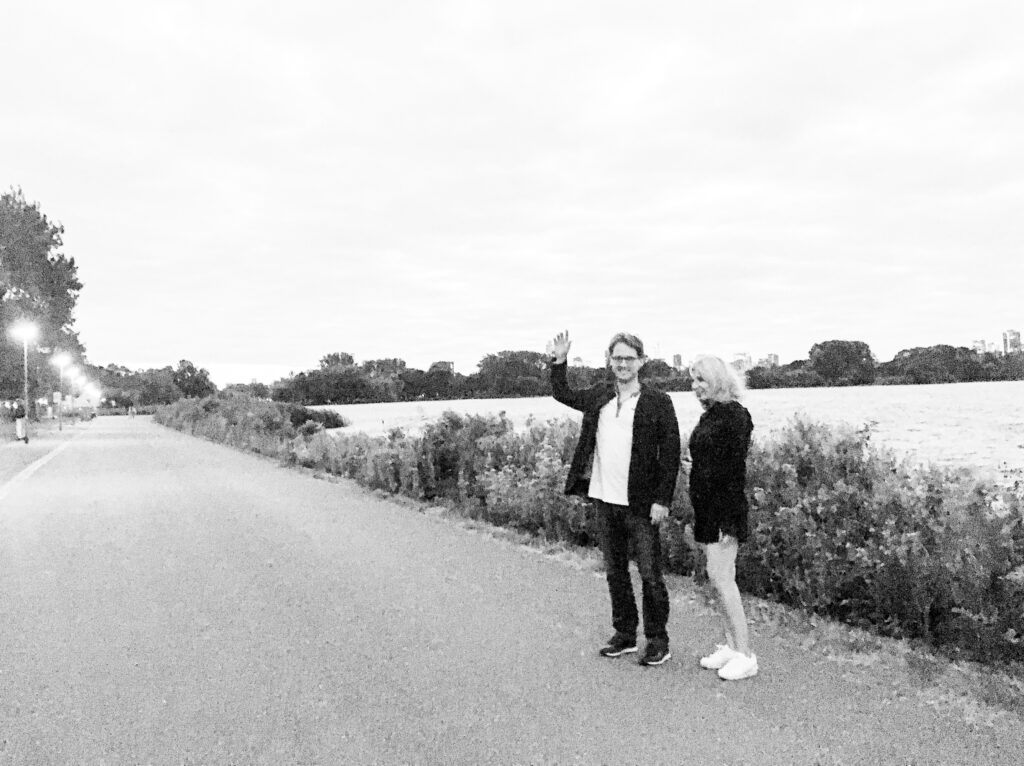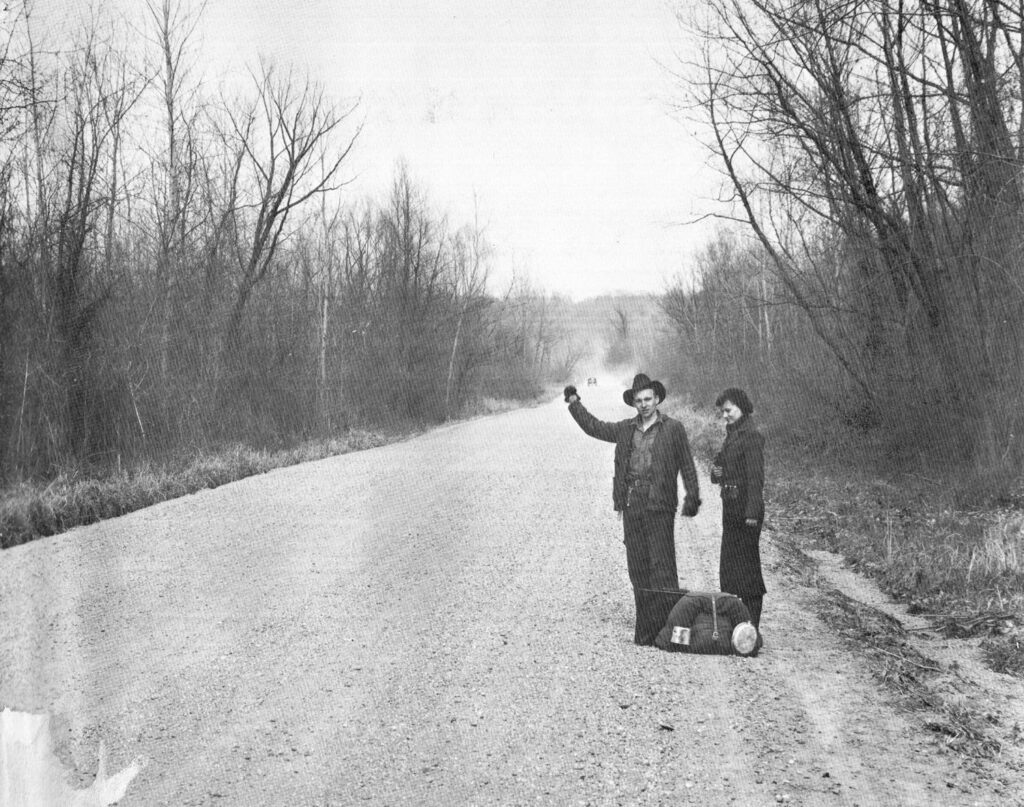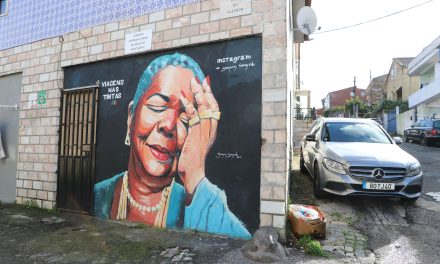Once upon a time there were living objects roaming on, and around the European highways called hitchhikers. Maybe you haven’t seen them for so long and thought that they were extinct, but they still exist. The hitchhiker puts their thumb out (or a piece of cardboard) and suddenly, almost magically, a driver feels the calling of the thumb and stops the car. Even the Covid-19 pandemic didn’t stop them from thumbing along the European roads. But why do they still do it?
The Facebook group ‘Hitchhiking Europe’ has over thirty-five thousand members and an average of four posts a day. One of the members of the Facebook group is Pawel Wrona (21) from Poland. Pawel has doglike eyes and a patchy beard. He traveled to fourteen European countries during the pandemic and came back last week from hitchhiking to Turkey. “I travel to meet people and hitchhiking is the easiest way to get really close to people really fast. That’s why I like hitchhiking.”
“Hitchhiking can only thrive when there’s an overlap between people who think hitchhiking is a pretty good idea, and drivers willing to pull to the roadside and take a chance on a stranger.”
Jack Reid
Jack Reid is a historian and author of the book: ‘Roadside Americans: The Rise and Fall of Hitchhiking in a Changing Nation’. On the question of why people still hitchhike, he replied: “Out of a sense of adventure and in resistance to mainstream norms. This was different in the mid-1970s (the peak years of hitchhiking) because it was normal to hitchhike: “Many of the hitchhikers were middle-class individuals commuting to school or looking for a cheap adventure over summer break. They associated hitchhiking with romantic adventure.”
Yonathan (25), born in Belgium now living in Israel, decided to go hitchhiking in Eastern Europe: “Because of the coronavirus I wasn’t able to see my family for such a long time, so after I got vaccinated in June, my girlfriend and I decided to go visit them.” His journey started in Italy and from there he went to France, Belgium, Netherlands, Germany and finally the Czech Republic. Yonathan had a different approach to hitchhiking: “I went up to people at gas stations. I did this because I could establish a relationship and was able to take the doubt away, that they might have.”
Hitchhiking in the midst of the Covid pandemic wasn’t easy for Yonathan: “It was difficult sometimes to convince the driver that I was vaccinated and safe to lift.” Pawel had a whole different experience correlated to the pandemic. When Pawel was on his way back from Turkey, he needed to cross the border from Bulgaria to Romania. Romania had a fourteen-day self-quarantine policy when entering the country: “There were two officers from the border control checking me, they didn’t want me coming into Romania because I didn’t go into quarantine. I first tried to talk my way out of it, but that didn’t work, so then I bribed them.” Powel paid each officer twenty euro, and then he went into Romania without having to go into quarantine. Looking back, Pawel doesn’t regret anything: “I think it was fun. It’s part of the adventure, you know.”
“You still need luck; you need that one vehicle that stops.”
Yonathan
Other than this incident, Pawel doesn’t think hitchhiking became more difficult in the pandemic: “I still had to wait just as long. Other than the drivers assuming that it was more difficult to find a ride, it was pretty similar.” Yonathan agrees with Pawel: “The people that are scared to take hitchhikers don’t take you anyhow. You still need luck; you need that one vehicle that stops, that’s part of the adventure.” Reid thinks this is because “Hitchhiking is such a marginal activity these days that it is difficult to argue the pandemic had a dramatic change. The majority of the people already had a resistance to offering strangers a lift, and the people that used to take hitchhikers probably still do and will keep doing so.”

The way people use their body to say that they are hitchhiking hasn’t changed since the picutre from 1936.

A man and woman hitchhiking near Vicksburg, Mississippi in 1936, photograph by Walker Evans




